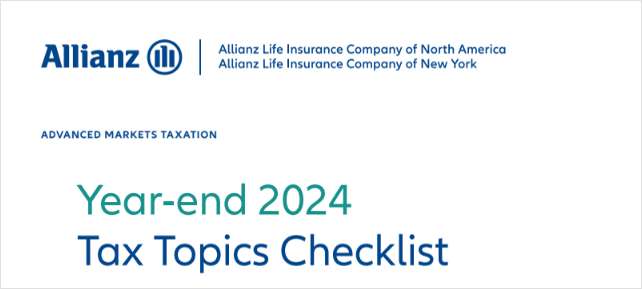
Watch These 10 Signs for the Next Recession
U.S. growth is strong, unemployment is low and consumer confidence is high, so why should investors worry about a future recession? Because all those markers are "consistent with an economy entering the late stages of the business cycle," and beyond that lies inflation, says Mark Zandi, chief economist at Moody's Analytics. "It is prudent to take stock of where we are in the business cycle and start thinking about the next recession," writes Zandi in the firm's latest U.S. Macro outlook. "Watch the signposts." The signposts Zandi is referring to should be viewed within the context of the current U.S. expansion lasting almost nine years, making it one of the longest expansions in history. It cannot go on forever. There are key developments investors and advisors should be watching for. Some have already occurred, others appear to be imminent and still others are still a way off. 1. Beyond full employment. The U.S. economy is operating beyond full employment, which sets the stage for wage and price pressures, a more aggressive Federal Reserve tightening monetary policy and rising interest rates. Past recessions have occurred on average three years after full employment has been reached, which happened last summer, says Zandi, suggesting a possible recession in summer 2020. He and other economists peg full employment at a rate near 4.5%. According to the latest data (for March), the U.S. unemployment rate is 4.1%, a level that has been sustained since October 2017. This marker — combined with the deficit-financed tax cuts and increases in government spending that are expected to swell the deficit to over $1 trillion in the next fiscal year — points to a labor market that threatens to overheat, writes Zandi. 2. Oil price spike. Such spikes have contributed to every downturn since World War II because they act like a tax on consumer spending, writes Zandi. U.S. crude oil prices have risen 13% this year to over $68 per barrel, the highest price in over three years, but prices have been volatile. 3. Trade war. This is another potential supply-side shock that could result in slower growth and higher inflation which increase the risk of the economy overheating. "If a trade war does break out, recession risks will quickly increase," writes Zandi. 4. Inverted yield curve. When long-term bond yields fall below short-term rates, the curve is said to invert and when it does, a recession usually follows about a year later, according to Zandi. The current curve still shows an upward slope, but the spread between long-term and short-term yields has narrowed. The gap between the 2-year and 10-year Treasury, which was 107 basis points a year ago, is just 50 basis points currently. The gap between the federal funds rate and 10-year Treasury is only slightly narrower than the year-ago spread — 120 basis points versus 123 basis points a year ago. "Given our expectations for the Fed to normalize policy in response to massive fiscal stimulus and the resulting threat of an overheating economy, an inverted curve seems possible as soon as summer 2019," writes Zandi. 5. Corporate/Treasury yield spread. When the yield spread between the Baa corporate bonds (the lowest investment-grade rating in Moody's universe) and 10-year Treasury widens to above 200 basis points, a downturn is likely to follow, says Zandi. The spread is currently just under 170 basis points. 6. Year-over-year decline in stock prices. Such declines tend to lead recessions by one or two quarters, according to Zandi, but it hasn't happened yet. The S&P 500 is down around 0.35% year to date, but it's up 13% from a year ago. "Stock prices are off from all-time highs but still up solidly on a year-ago basis," writes Zandi. Some signposts are not indications about what's to come but what's already occurred, which is not always apparent. (The National Bureau of Economic Research, which is the official arbiter of when recessions begin and end, often tags the start months later.) Zandi includes these markers in that category: 7. Reversal in the unemployment rate. If the unemployment rises by more than one-quarter of a point over three consecutive months, the economy in likely in recession, writes Zandi, adding that weekly jobless claims rising quickly above 300,000 "should set off alarms." The latest jobless claims report, for the week ended April 14, showed claims falling by 1,000 to 232,000. 8. Copper prices below $2.50 per pound. This development would signal a slowing global economy, which would affect the U.S. economy. Copper prices today are near $3.15 per pound. 9. A declining Australian dollar vs. the U.S. dollar. The Australian economy is closely tied to global commodity prices, global trade and China. A declining Australian dollar would suggest a slowing global economy, according to Zandi. It's currently trading near 77 cents to the dollar, down 5% year-to-date but not too far below the 80-cent average that has prevailed over the past quarter century, according to Zandi. 10. Decline in commercial and industrial loans at commercial banks. This development is arguably "the most reliable signpost that a recession is already underway," writes Zandi. Growth in C&I loans, which indicate business expansion plans, was close to zero throughout 2017 and into early 2018 but has picked up in the last two months, according to Fed data. Businesses may be increasing borrowing to get ahead of rising interest rates. At the moment, according to Zandi, the U.S. economy remains "in a virtuous cycle, with falling unemployment, strengthening confidence and more investment. This is not expected to change soon. When it does, it will be the closest thing to proof that a recession has begun." --- Related on ThinkAdvisor:
© 2024 ALM Global, LLC, All Rights Reserved. Request academic re-use from www.copyright.com. All other uses, submit a request to [email protected]. For more information visit Asset & Logo Licensing.
Featured Resources
View All
Sponsored by Allianz Life Insurance Company of North America and Allianz Life Financial Services LLC
Year-end 2024 Tax Topics Checklist








